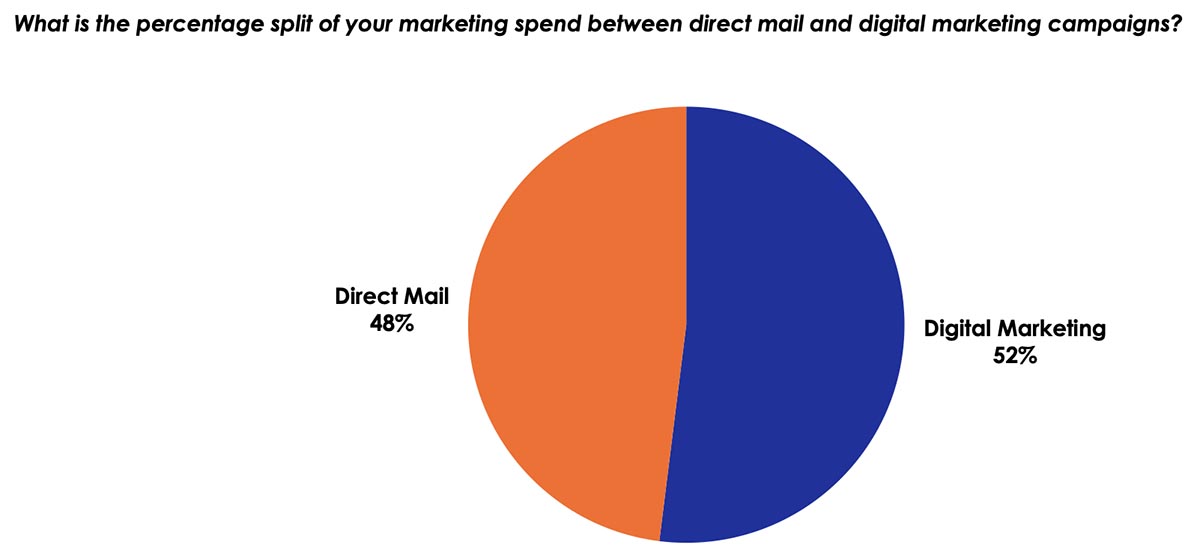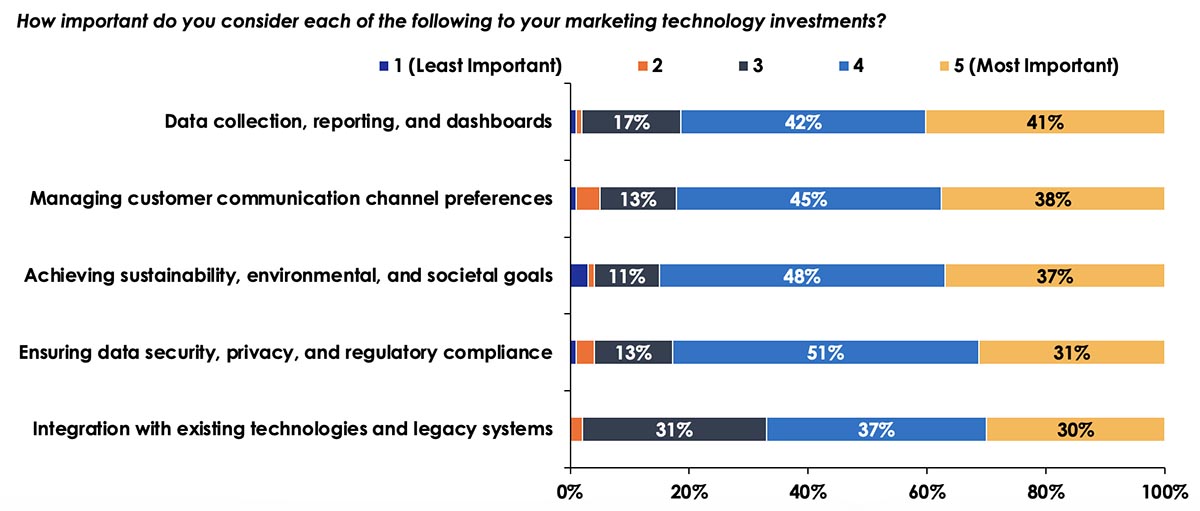- The rise of digital technologies means that there is now an abundance of information about the consumers and markets they want to serve.
- Data, howsoever necessary, can be problematic on just about every level—simply getting names and addresses right is a business in itself.
- As the print and mail industry incorporates a digital-first mindset, service providers must seek opportunities to fill the gaps in their clients' operations.
By Karen Kimerer
Introduction
Without data, the process of marketing would be much more difficult because businesses would be forced to rely solely on instincts and anecdotal evidence to promote their brands. This approach would likely lead to a disconnect with their audience, resulting in ineffective marketing campaigns. Therefore, data analytics is essential in modern marketing. It enables marketers to make more informed decisions about their strategies by providing valuable insights into customer demographics, interests, and behaviors. In addition, marketers can better understand what resonates most with their target audience by analyzing data from various sources, such as direct mail campaigns, website traffic, email campaigns, and social media interactions.
As marketers intensify their efforts, they must remain mindful of today’s staggering volumes of data. Although the integration of marketing and data has proved to be a winning combination for many businesses, it’s important to understand that data overload is real. This article explores the challenges that direct marketers face with data management and how they can address them.
Striking the Right Balance
Data is crucial for decision-making in today's business world. Fortunately for marketers, the rise of digital technologies means that there is now an abundance of information about the consumers and markets they want to serve. It's well known that digital marketing channels like social media, email, and websites make it possible to track and analyze customer interactions in real time. When used properly, this type of feedback means that companies can make quick adjustments to become more competitive. This is great for brands that rely solely on digital marketing channels, but collective research has consistently shown that most businesses also use direct mail. In fact, Keypoint Intelligence’s most recent Direct Marketing Communications survey reveals that the split of marketing spend between digital and direct mail is almost equivalent.
Figure 1: Direct Mail vs. Digital Marketing Spend

N = 150 Total Businesses in the US
Source: Annual State of Direct Marketing Communications Business Survey; Keypoint Intelligence 2022
As marketers continue to compete for mindshare, they must find a way to put that print to work so they can get the most from their investment. After all, it’s quite difficult to measure engagement with static mail. As a result, it’s no surprise that according to the same study mentioned above, nearly 70% of marketers are integrating a digital call to action with their printed direct mail. The primary drivers are a need to measure campaign effectiveness and a desire to improve the overall customer experience.
Good Data Can Be Difficult to Manage!
Some would argue that "content is king," but it’s difficult for marketers to know what type of content works and when it should be used without data. The phrase “data is king” reflects the growing recognition that data-driven insights and analytics play a vital role in determining business outcomes.
Even so, data (howsoever necessary) can be problematic on just about every level—simply getting names and addresses right is a business in itself. Add to that customer preferences about where they want to receive their messages along with tracking results across multiple channels, and the challenges can be monumental. Tasked with everything from segmenting data to ensuring security and privacy, today’s marketers really have their hands full.
If asked where they retrieve their data, a good number of marketers will admit that they work from multiple databases. Even with the ability to integrate and cross-reference one list to another, pulling from numerous sources can put data integrity at risk. As such, marketers recognize the value of having access to the best tools and technologies.
The figure below provides a closer look at some common investments. When respondents were asked which investments had the most impact, marketers assigned the highest importance to data collection tools and dashboards for reports and analytics.
Figure 2: Importance of Factors to Technological Investments

N = 150 Total Businesses in the US
Source: Annual State of Direct Marketing Communications Business Survey; Keypoint Intelligence 2022
Seizing the Opportunities
Without question, we know that marketers rely on data to make informed decisions about where to allocate their budgets, gain insight into customer preferences, and determine where they need to adjust their strategies to optimize their efforts. As mail volumes return to pre-pandemic levels and the blend of marketing channels continues to grow, data analytics will only become more complex. This means that businesses of all sizes will need access to specialized skills and solutions to remain competitive.
As the print and mail industry incorporates a digital-first mindset, service providers must seek opportunities to fill the gaps in their clients' operations. Offering a listening ear is a good place to start. Conversations might incorporate a few of the challenges mentioned in this article, then tested to determine how they compare with your customers' environments. If the gap is wide enough, develop a strategy to become the resource of choice when it comes to data and marketing. With careful investments in talent and technology, revenues in the future might come from different sources.
The Bottom Line
As we move into the future, marketing will continue its evolution to include more automation, hyper-personalization, and channel integration. Data will remain constant, as it is required for brands to make important decisions about optimizing their marketing spend and driving real business results. Collecting the right data and then using it correctly remains a challenge for firms of all sizes. There has never been a more important time for marketers to consider investing in improving data management.
As part of the Business Development Strategies Consulting Service at Keypoint Intelligence, Karen Kimerer has experienced the many challenges of expanding current market opportunities and securing new business. She has developed a systematic approach to these opportunities, addressing the unique requirements of becoming a leader in our changing industry.














Discussion
By Gee Ranasinha on Jul 20, 2023
A couple of comments:
1) As marketers we must consider the fundamental tenet that underpins all data, which is its provenance. All data comes from the same place: the past. The old investment adage about "not assuming future gains from past results" is as relevant here as anywhere else. Buyer behavior constantly changes and evolves and is influenced as much (I would say more) by irrational, hard-to-measure, contextual influences as logical, repeatable ones.
2) To misquote Andrew Lang, too many businesses use data in the same way as drunk uses a lamp post: for support, rather than illumination. There's a thing known as The McNamara Fallacy, which is the flawed assumption that what can't be measured isn't important. It is the tendency to make a decision based on observable, quantitative metrics while ignoring all others. It leads to a focus on measuring what is easy to measure, rather than what is actually important (i.e. what is indicative of desired outcomes).
That's not to say data isn't important in helping marketers make better decisions. Of course it is. But data only tells you WHAT people are doing. It doesn't explain, or allow you to generalize, WHY they may be doing it. The point of data isn’t to determine next steps. It’s to provide pro and contra arguments that allow marketers to make more informed decisions.
Data isn’t 'truth'. Data is 'evidence'.
By Robert Godwin on Jul 24, 2023
Article on marketing and not one mention of creativity.
As Gee points out, data is evidence. What you are supposed to do with that evidence requires creative execution. AI might be of aid to those without creative resources. But that usually results in a rehash of previous marketing programs. Creative services are the most difficult service to convince people to allocate budget to, and so often is the first of thing to be cut.